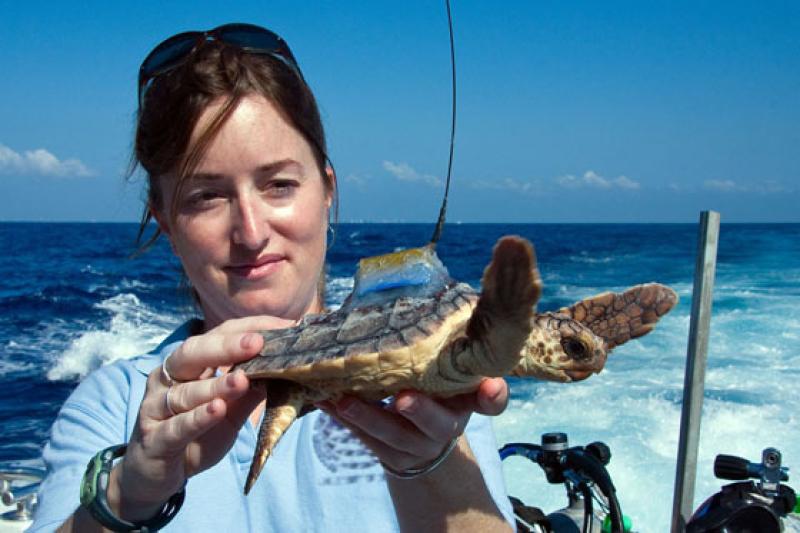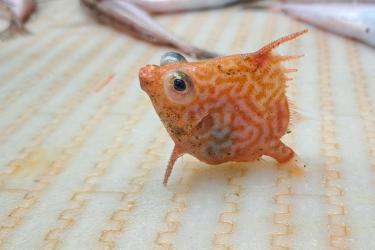Kate Mansfield is a marine biologist with NOAA Fisheries, and she studies endangered sea turtles. Exactly where baby sea turtles go after hatching is a mystery, and Dr. Mansfield has been trying to solve it. Scientists use satellite tags to track adult sea turtles as they migrate across the ocean, but try as they might scientists have been unable to attach satellite tags to very young sea turtles. They start off so small, and grow so quickly, that anything scientists attached to their shells would fall off as the shell expanded.
That is, until Dr. Mansfield came up with a solution. She didn’t do this alone, of course. She had two important collaborators in this project. One, Dr. Jeanette Wyneken, is a research biologist at Florida Atlantic University. And the other, Marisol Marrero, is a nail salon technician at Not Just Nails in Boynton Beach, Florida.
Sea turtle shells are made out of keratin. That's the same stuff that our fingernails are made of. And so, Dr. Mansfield and her collaborators—each an expert in their respective fields—put their heads together and made the Keratin Connection.
To learn more about satellite tag attachment methods for tracking sea turtles, see the journal article from the Marine Ecology Progress Series.


